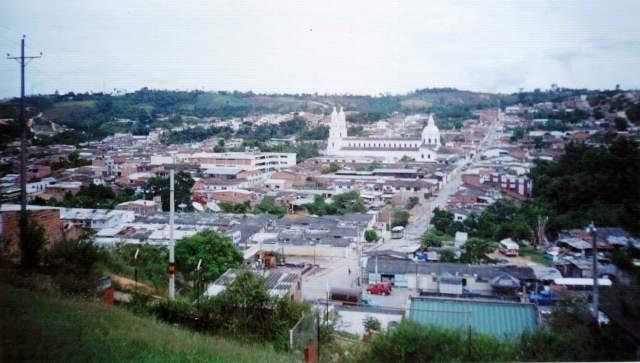Soto, Santander, Colombia
Suggest Place to Visit
1919
Track to location with GPS |
 |
The name Lebrija was given as a tribute to the memory of the illustrious Spanish character Don Antonio Martínez de Cala y Xarana, better known as Elio Antonio de Lebrija, a name that, out of love for his homeland, the polyglot took after his return from the academic training acquired at the universities of Florence, Rome, Bologna, Pisa and Padua, in Italy. It was common for great personalities in Europe to put the name of their people as their surname (Erasmus of Rotterdam-Francisco de Asís-Fray Luis de León, Antonio de Padua and others.). Don Antonio Martínez, like the previous ones, made with his name, honor to the sun, to Italy and to Lebrija.
Lebrija was the intellectual sun that shone in Spain in the 15th century. The greatest humanist of the Spanish Renaissance of the first decades of the 16th century; Calderón de la Barca, Tirso de Molina, Santa Teresa, Miguel de Cervantes Saavedra and the writers of the Spanish golden age drew their linguistic foundation from it.
Author of many works; among them, his renowned Castilian Grammar published in 1,492. It was the book required by the Catholic Monarchs, to study Castilian, in the kingdoms of Castile, Aragon and America. The conquerors brought it as a bedside book to teach the Spanish language in the new kingdom of Granada. For this reason, Lebrija was, historically, the best known intellectual in Spain and America at the time of the conquest.
His biographers say that people from Seville, Alcántara, Cádiz and even from central Spain, to honor their countryman, changed their name to Antonio de Lebrija because it was the fashionable nickname during the first half of the 16th century. For this reason, Don Braulio Diettes and his followers, in good time, chose the name of Lebrija for our municipality, in honor of Don Elio Antonio and his hometown, much referred to by generations from Cantabria.
Why Don Elio Antonio was not in America
The versions of historians that point to Don Antonio de Lebrija as a visitor to our lands is not consistent with the existence of the Lebrijano. The conquest, inland, of the Government of Santa Marta-Coro, ordered by García de Lerma to expeditionary captains, began in 1527 and the one that advanced the most only reached the island of Monpós and returned to Santa Marta. In 1534 García de Lerma died and was replaced by Fernández de Lugo. He resumed the work of the conquest of the interior with the expedition of Captain Gonzalo Jiménez de Quesada which left Santa Marta on April 5, 1536, reached Tamalameque, a town where he remained until July. In October he approached the Tora (Barrancabermeja). In December he took the Eastern Cordillera in search of the salt that the Yariguíes used to season their food, and in August 1537 he reached the Bogotá savanna.
Captain Antonio de Lebrija, a native of Alcántara, who accompanied Quesada's expedition as treasurer of the army was one of the many Antonios de Lebrija who, out of appreciation for Don Elio Antonio, the polyglot, renamed themselves with his name. For this reason, in the town of Alcántara, neither his name nor the exploits of this man who appears in the essay on ancient Cundinamarca and that General Juaquín Acosta gave to the National Library are known. This character, according to Mantilla Herrera (Lebrija Book Pag. 33-34) was not in America before 1536, he did not walk with Alfinger in any of his two expeditions and he was not in the lands of Santander corresponding to the Guane empire.
The first surname Lebrija, of Spanish origin, made official in America, is that of Ana Lebrija de Alfaro, daughter of Bartolomé Lebrija, possible son of Don Elio Antonio. She entered Santo Domingo on May 5, 1,564 with license 5221 as an official of the Spanish government. The account of the entire chronology of the conquest, in the Manual of History of Colombia of the Colombian Institute of Culture, makes it possible to assure that Don Elio Antonio de Lebrija, at the time of Don Gonzalo Jiménez de Quesada in America, no longer lived; he was born in 1,441 in Lebrija and died in Alcalá de Henares in 1,522
Evolution of the municipality
Since the institutionalization of Llano de los Ángeles as a municipality, Lebrija and its entire territory have had frequent ups and downs in its growth and development. It has been important for its agricultural products, for the trade in tobacco, quinine, coffee, sugar cane, pineapple and citrus. For its timber production from Cedrito, Cuzamán, Sardinas, La Victoria, El Centenario, El Líbano, La Girona and Marta, the livestock from Conchal, Vanegas, Chuspas and Provincia, Vega Rica, La Renta and Portugal. For the pig and poultry production in the central area of the municipality. Very important in the 30s and 40s of the last century due to its cultural advancement with the Normal School for Men, urban schools, Las Granjas Campesinas, the Escuela Hogar de Portugal for the children of those exiled by Hansen's disease and the municipal library.
El Tirabuzón gave him life in the 19th century; and the road from Bucaramanga to the town in the 20s and 30s of the last century, oxygenated it; but, the completion of the highway to Barrancabermeja and the construction of the railroad to Puerto Wílchez shortened his breath. The end of the twentieth century and the beginning of the twenty-first revived it and its development today is more important than that of the golden years of the past.
Despite the fact that its soil has had scenes of peace and war, its people are always happy, optimistic, haughty, proactive and with open arms extended with love to the visitor. The demography, in many years, since its territory included Sabana de Torres, has oscillated between 20 and 23 thousand inhabitants. Its urban population has grown rapidly (8,854 inhabitants) and the rural population remains at more than 15,454. The new national census will be in charge of confirming its population growth. Its fields are emporiums of vegetables, fruit trees, pastures, birds and livestock.
Today's Lebrija is thriving in its trade; It has had the transition from the site and the colonial houses to the urban modernism of the restorations. Appreciate the canalization of the Las Raíces ravine, its park, its wide main streets and with pedestrian paths, the architecture in accordance with the growth of its commercial and cultural life, express that the evolution guided by the popular vote administrations has arrived and that their governments want to see and continue to see their homeland transformed, cultured and embellished, without its colonial appearance completely disappearing.
The Palonegro airport, built for the city of Bucaramanga and the metropolitan area, is on the Lebrija premises. Already, with pride, we hear every day that the flight attendants of the national airways that occupy its runway do not speak of the Bucaramanga airport but of the Palonegro Airport of the municipality of Lebrija.
The municipality of Lebrija is located in the middle part of the Lebrija river basin that belongs to the main hydrographic systems of the Department of Santander del Sur. In this sector there are sub-basins and micro-basins that are tributary to the main basin of the Lebrija River, such as the Lebrija Medio sub-basin, which is made up of the La Angula micro-basin to which the Las Lajas, La Aguirre, La Puentana streams, La Tigra, La Lagunera, Piedra Azul and Torcoroma. The La Cútiga micro basin is the second largest in the area of the Lebrija river sub-basin. The sub-basin receives several small tributaries from the Montevideo village that are grouped under the name Montevideo - Vanegas, all with short routes and small very torrential channels in winter. Of greater importance, due to flow, is the Vega de Pato micro basin, which collects the waters of the La Estrella path and flows into the Chuspas path. With the name of Chuspas a series of small streams, permanent or not, that pay tribute to the Lebrija are grouped. Separating the municipality from that of Sabana de Torres, runs the Las Doradas stream, which gives its name to said micro-basin.
The Sogamoso Medio sub-basin is served by the Sucio, La Leona and La Negra-Pujamanes micro basins. The La Leona micro-basin is especially important due to the mass removal phenomena that occur in its area of influence, which constitute a destabilizing factor for the Bucaramanga Barrancabermeja road. The La Negra - Pujamanes micro basin is of special importance due to the potential of water supply for the population concentrations of the municipality. The municipality's hydrographic system corresponds to the Lebrija-Alto sub-basin identified with the code 2319-6. The average multi-year flow calculated for the basin is 150.3 m3 / s and the maximum multi-year is 462.9m3 / s. The lower area of the basin is floodable.
Limits of the municipality:
Lebrija limits to the east with the municipality of Girón; to the west, with the municipality of Sabana de Torres; to the north with the municipality of Rionegro, and to the south with Girón.
Total extension: 549.85km2 (54985Ha) Km2
Urban area extension: 2.4943 Km2
Rural area extension: 547,3557 Km2
Altitude of the municipal seat (meters above sea level): 1050 meters above sea level (masl)
Average temperature: 23 ° C
Reference distance: 22 Km From the City of Bucaramanga.
Economic activity in the municipality of Lebrija is basically supported by the primary sector of the economy, mainly in the agricultural and livestock subsectors, from which nearly 80% of the population derive their income. In a similar proportion, the primary sector is the main contributor to the municipal treasury, via property and complementary taxes. Activity in the agricultural sector is very dynamic and varied, as will be seen in the analysis of the subsector, but with very serious problems of profitability and productivity of the production chain; Regarding the livestock sector, a very clear distinction must be made between two trends in activity, one made up of well-trained entrepreneurs, with high levels of technification and investments in adequate and modern infrastructure, who are dedicated to poultry and livestock ; Another sector of livestock producers has extensive livestock farming activity, in remote areas of the municipality, with little advanced technologies, in the same way there are other artisanal producers in pig farming and fish farming, who carry out a low profitability activity and with difficulty manage to maintain themselves against the most technified producers.
Industry and Commerce and provision of services urban sector
As for urban commerce and services, these are activities that have a moderate dynamism and generate employment for business owners and on a small scale for individuals. In the urban sector, commercial activities are carried out through 699 establishments, mostly stores (25.18%). In general terms, urban commercial activity is carried out through companies that generate little employment or serve to self-generate employment, as is the case with stores, which are serviced by the same owners in more than 98%. There is only one supermarket that generates more than 10 jobs, two that generate 4 and the rest are one or two. e 8195; Hardware stores generate little employment, since most do not exceed 8 jobs generated. e 8195; The rest of the businesses are basically job generators. e 8195; We have a panorama of a large number of commercial businesses, with a low composition of capital and employment generation. e 8195; For the urban area they generate 951 jobs, which are also equivalent to approximately 37%, although compared to general activity, including rural activity, it means 5.8% in employment. e 8195;
The industrial sector has two large companies with departmental coverage: one generates about 190 jobs. e 8195; The bakeries in generating employment that produce for a regional market continue to be important: Barranca, San Vicente, Betulia, Sabana de Torres, Girón, Rionegro - and clothing. e 8195; They also contract maquila at the workers' homes. e 8195; Its sales cover some national markets. These three activities generate 82% of industrial employment. e 8195; One of the great difficulties of the industries resides in the cost of public lighting, which in comparison with the metropolitan area is too expensive. Industries account for 22.6% of employment, but compared to rural areas they fall to 3.57%.
In the services sector provided by private companies or mixed capital companies, there are 166 and they generate 366 jobs, which in the urban sector represent a figure close to 25.8%. e 8195; The most important in generating employment are transportation, which contributes 30%, approximately. e 8195; Now, in relation to all employment, including rural, the urban services area covers 4.07%.
The public sector generates 217 jobs, which are equivalent to 25% of the occupation in urban functions. e 8195; However, its municipal importance is reduced, representing only 2.41%, approximately.
Institutional (Mayor's Office), social, domiciliary and complementary services, in addition to transportation and financial services, are equally important in the municipality. A relevant activity is that of financial services provided through COOMULTRASAN LTDA.
Tourist activity
In this area there is little development dynamics, since it is an economically unexploited activity in the municipality, despite its landscape and eco-tourism potential and its proximity to the Bucaramanga Metropolitan Area, and the presence in its territory of the Palonegro Airport and recreation sites such as the Pozo del Águila, Pozo de la Dicha and the El Gallego Spa, which although not well preserved, can be the object of development and source of income.
The Magdalena Medio region is rich in swamps where fish are exploited and are suitable for practicing water sports. The most important ones are; San Silvestre, Opón, El Tigre, and El Llanito and Chucurí in Barrancabermeja, Paredes, Torcoroma, Yarirí and La Doncella in Puerto Wilches. All are located at an average height of 200 meters above sea level.
Comments
We don´t have yet any comments about:
Lebrija
Lebrija
Be the first to leave a comment as it is very important to inform other people
Outros locais a visitar
Within a radius of 20 km from:Lebrija
Girón |
| 6,8 Km |
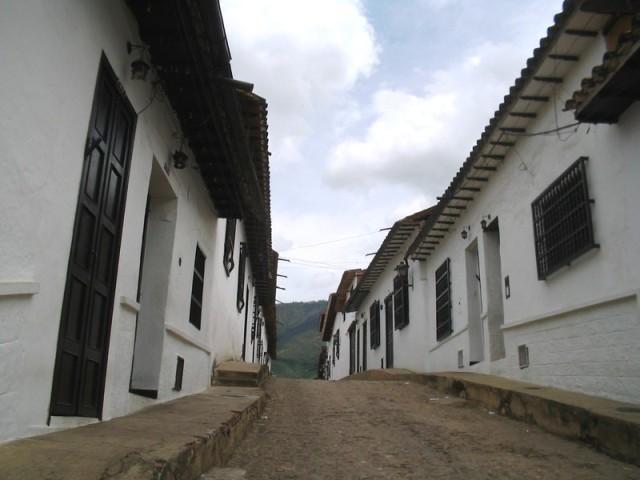 |
Peralta Park the Park of Lovers |
| 7,3 Km |
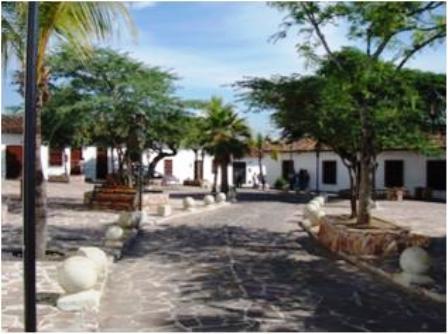 |
Chapel the Lord of Miracles |
| 7,3 Km |
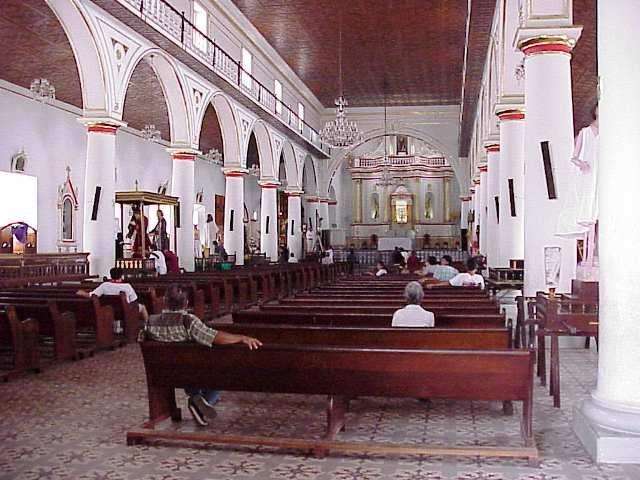 |
The Snow Park |
| 7,4 Km |
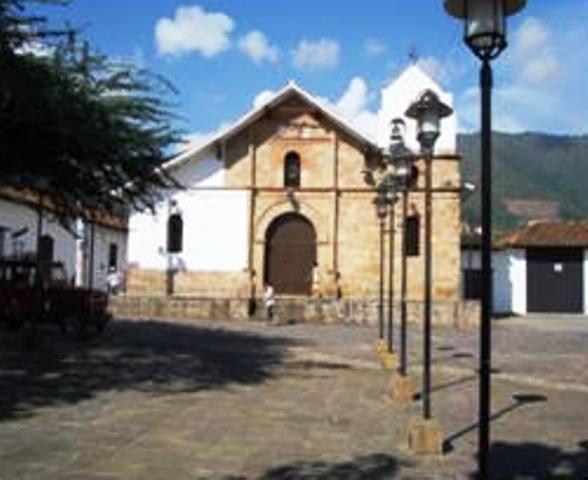 |
Frayle Mansion Museum |
| 7,5 Km |
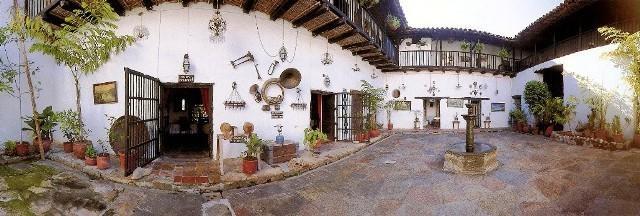 |
Town Hall and Government House |
| 7,5 Km |
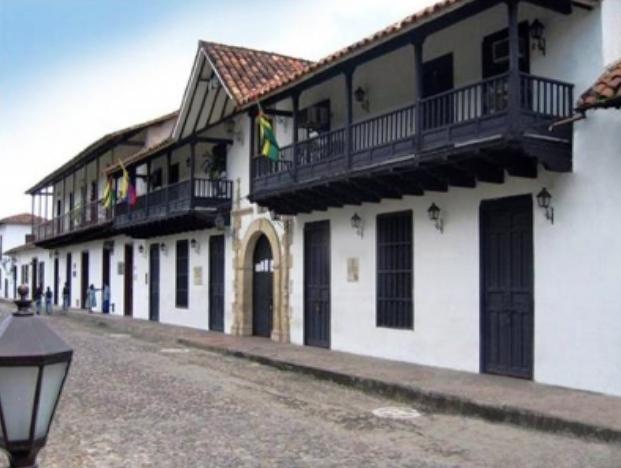 |
House of Culture |
| 7,5 Km |
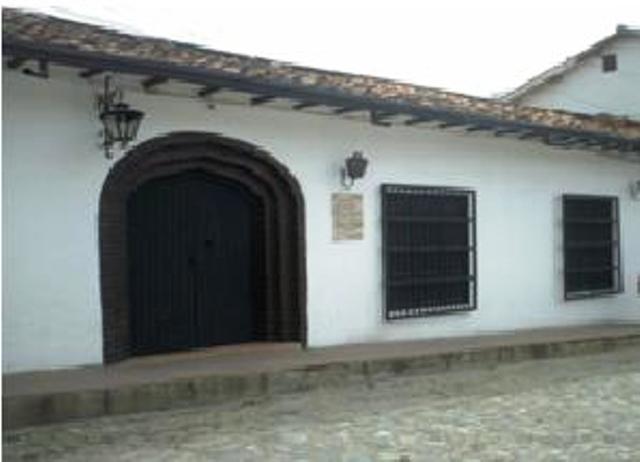 |
House of Bolivar de la Academia de Historia de Santander |
| 9,7 Km |
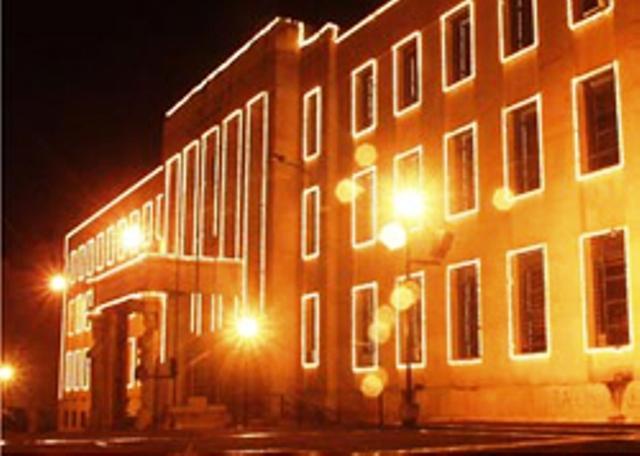 |
Custodio García Rovira House of Culture |
| 9,7 Km |
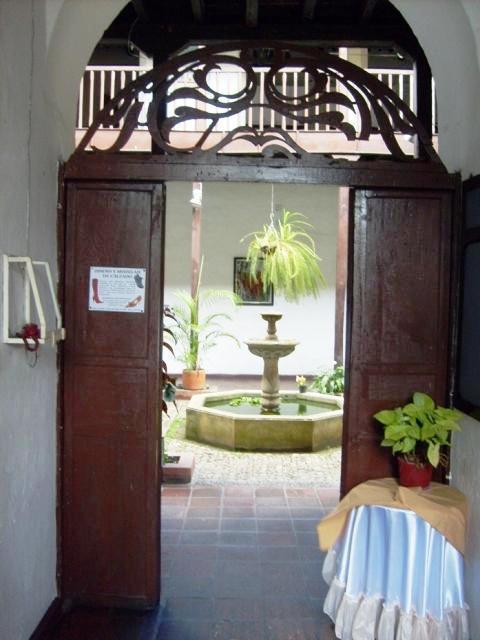 |
Bucaramanga |
| 10,0 Km |
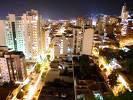 |
Museo Francisco de Paula Santander |
| 10,5 Km |
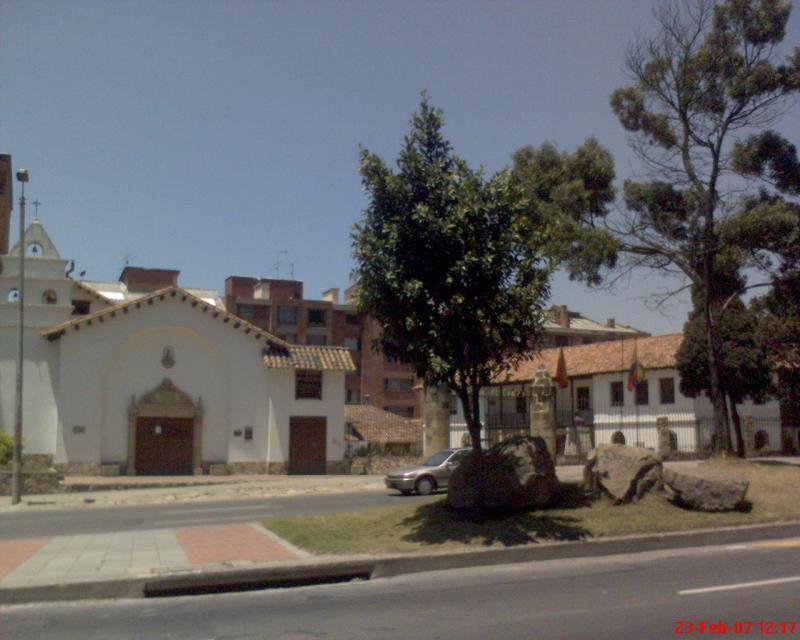 |
Museo Nacional del Tiple |
| 10,8 Km |
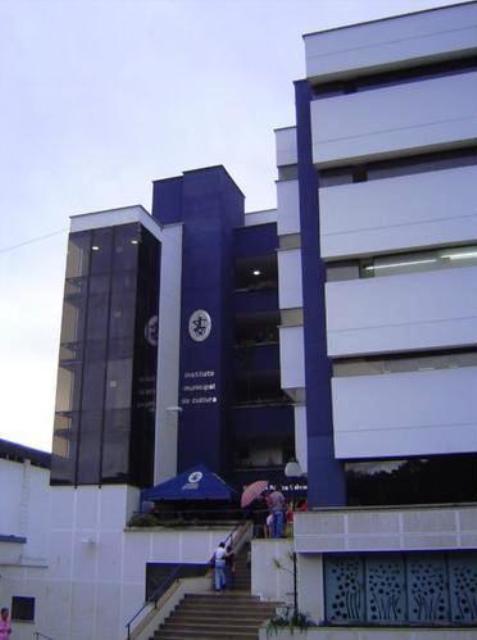 |
Museo de Arte Moderno de Bucaramanga |
| 10,9 Km |
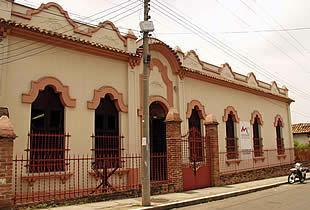 |
Floridablanca |
| 15,1 Km |
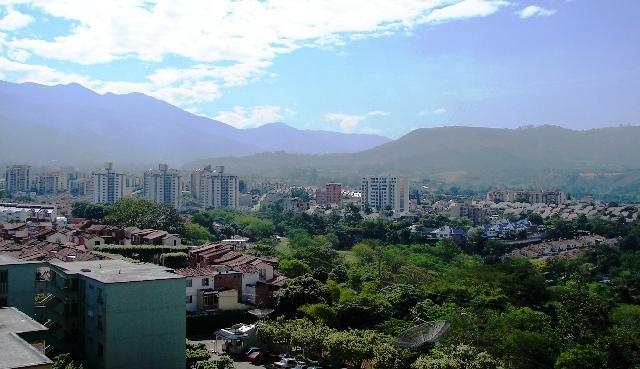 |
Hotel reservation near Lebrija within a radius of 20 km
Why to book with ROTAS TURISTICAS
The best prices
Our partnerships with the world´s largest operators offer research on the best market prices.
More options
At Rotas Turisticos you can book the hotel, buy the air ticket, book the transfer from the airport to the hotel and vice versa, book the local excursions, rent the car, take travel insurance and consult the places to visit and where to go.
Holiday Tips & Destinations
Hundreds of holiday destinations with all the options that allow you to easily choose the destination that best suits your dream vacation.
ROTAS TURISTICAS
Links


